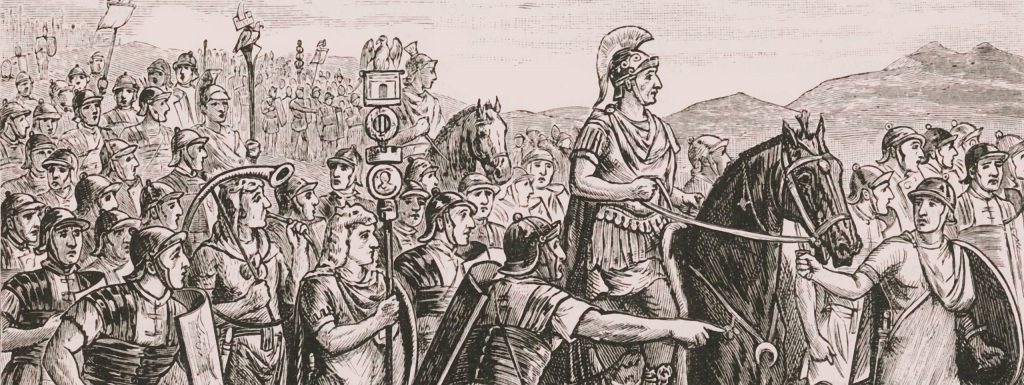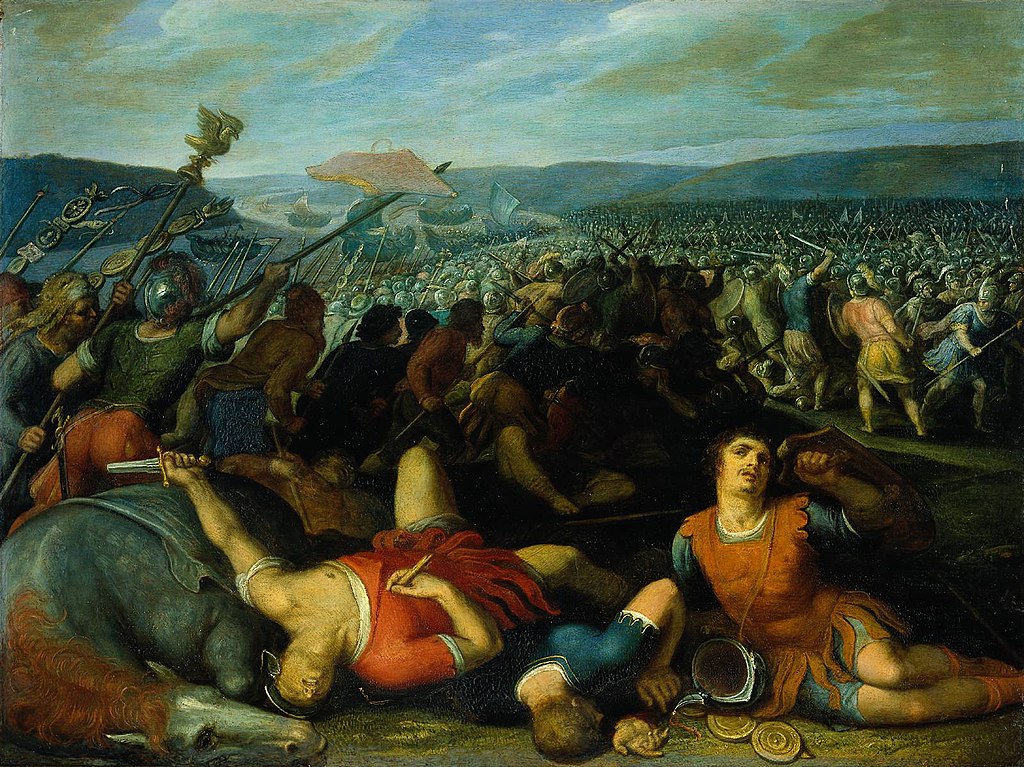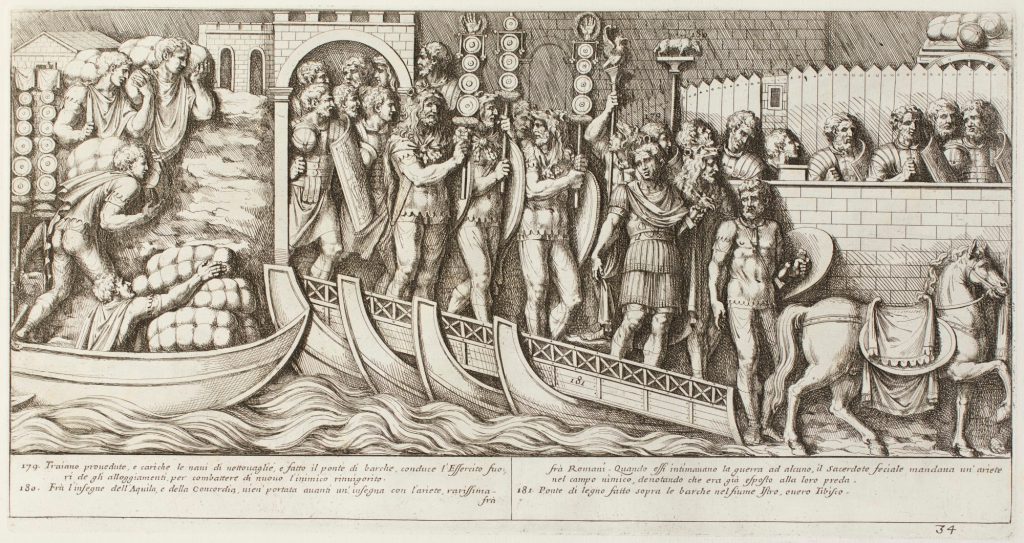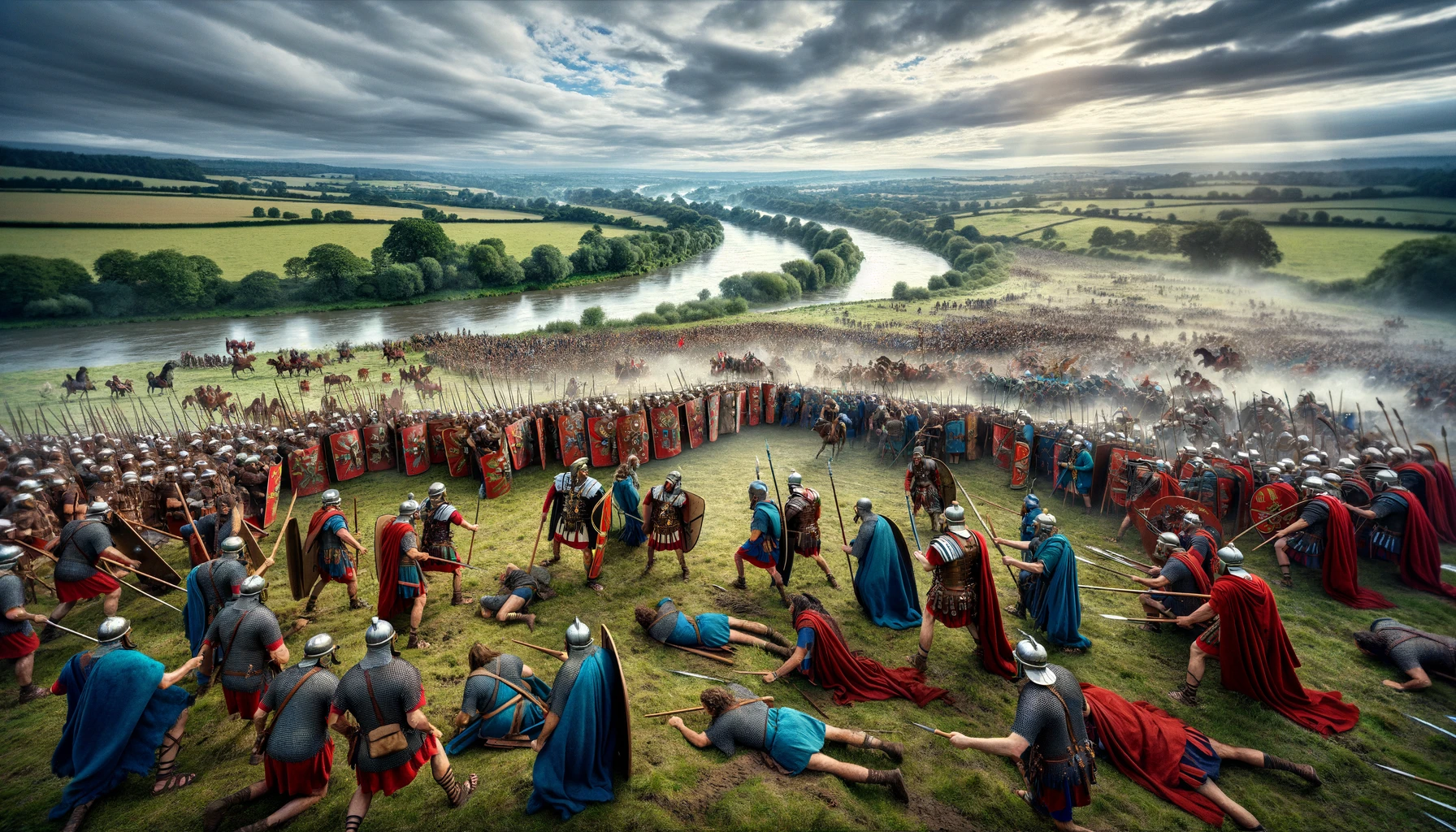The first major recorded battle of the Roman invasion of Britain under the orders of the emperor Claudius, the battle is thought to have been fought at a crossing of the River Medway, near the modern day city of Rochester in Kent, England, and it raged for nearly two days. The Romans were led by Aulus Plautiu and had four legions: XX Valeria, IX Hispania, XIV Gemina, and II Augusta, which was commanded by the future emperor Vespasian.
[Plautius] advanced further and came to a river. The barbarians thought the Romans would not be able to cross this without a bridge, and as a result had pitched camp in a rather careless fashion on the opposite bank.
Cassius Dio Cocceianus, The Histories of Rome, Book 60, Chapter 20
Where did the Battle of Medway take place?
Cassius Dio does not name the river, but it is probably the Medway. If the Roman army advanced along the North Downs ancient prehistoric track, now known as the “Pilgrims Way” they would have arrived on the Medway at Aylesford.
Alternatively they may have advanced along the ancient trackway of productive lowland of north Kent that became Watling Street then they would have arrived further north at Rochester.

On reaching the banks of the Medway river, Plautius stood on a high ground and could see into the marshland of Essex, where the Britons were waiting in force. The Medway was in a broad, marshy valley with an extensive flood plain which cuts south across Kent from the Thames estuary to Tonbridge, where its headwaters rise in the Weald. Until recently the Weald was an area of thick forests standing on damp clay soils that were almost impassable in winter or wet weather. The Medway thus formed a distinctive and very real barrier to movement from east to west.
Medway crossings
Normally people would use foot crossings or fords or use ferry boats to cross rivers. It must be remembered that 2000 years ago the Medway river was very different to today. In places it may have split into several channels forming islands and spread across its flood plain. The tidal reach is thought to have been at Halling in Roman times. Over the centuries the tide reached further up the Medway.
Evidence of a ford at Aylesford to the south was uncovered in May 1863 when the Lower Medway Navigation Company decided to remove ‘Walnut Tree Shoal’ about 150 yards above the bridge. Two parallel rows of large stones were found running across the river.
The Romans built a bridge over the Medway at what is now Rochester. That crossing point was retained in good condition through the centuries that followed and in medieval times was guarded by the massive Rochester Castle.
The Battle of the Medway – Phase One – Attack the British Chariots
On reaching a certain river, which the barbarians thought the Romans would not be able to cross without a bridge,—a conviction which led them to encamp in rather careless fashion on the opposite bank,—he sent ahead Celtæ who were accustomed to swim easily in full armor across the most turbulent streams. These fell unexpectedly upon the enemy, but instead of shooting at any of the men confined themselves to wounding the horses that drew their chariots and consequently in the confusion not even the mounted warriors could save themselves.
Cassius Dio Cocceianus, The Histories of Rome, Book 60, Chapter 20
Presumably the first phase of Plautius’ tactics was to create a diversion. He would have sent a great many troops move about and appear to be taking up positions along the bank. This had the effect of holding the Britons in their current position, observing the movement.

Cassius Dio stated that the Battle opened with the Celtæ using their skill of swimming across rivers in full equipment. This may have been Batavian Auxiliaries or other Celtic troops who were trained to swim in armour. The target of the attack was the chariot horses. Plautius knew of the British use of chariots, which had been so effective against the expeditions of Caesar in the previous century. He knew that these chariots had been positioned behind the British lines, possibly to one side. He had eight Batavian cohorts in his army, who were masters at crossing deep waterways unseen, while wearing full battle gear.
The auxiliary troops would have crossed the river to the south where the river was wider, with less current. A vital part of the plan would be for the troops to cross out of site of the British forces. There were and estimated 150,000 British troops, who would have taken up a lot of room, so the crossing would not be too close.
Then the Batavians attacked the British horse lines and either killed or hamstrung the chariot horses. British morale would have been affected by the loss of their horses and the realisation that the Romans had easily crossed the tidal river. Strategically, the British charioteers were now forced to become slow moving infantry.
As quickly as they had arrived, the Batavians fled, having done their deed. The Britons would have been thrown in array. While the Britons attended to this, legionaries moved across the water unseen to the other side and regrouped on firmer ground. Claudius had not only launched a surprise attack, he also created a diversion for his troops to cross unseen.
The Battle of the Medway – Phase 2 – Vespasian and the II Legion’s Flank Attack
The spearhead of two legions under the Flavian brothers made a successful crossing and established a base inland of the north bank of the Medway.
Plautius thereupon sent across Flavius Vespasian also (the man who afterwards became emperor) and his brother Sabinus, who was acting as his lieutenant. So they, too, got across the river in some way and killed many of the foe, taking them by surprise. The survivors, however, did not take to flight, but on the next day joined issue with them again.
Cassius Dio Cocceianus, The Histories of Rome, Book 60, Chapter 20
Vespasian’s first task was to decide on a crossing place for his attack. He would have had to look upstream for somewhere easily fordable by his troops. This would have either been at Aylesford, which would probably have been guarded by the British, or somewhere in between. The Roman Legions could cross rivers using pontoon bridges, as shown by the relief of Trajans Column, below.

Too late, the Britons realised that they had been outflanked and so threw themselves at the legions, who held firm. At all costs the Roman troops had to hold their position until reinforcements arrived. Throughout the day, both sides battled each other until night fell.
The Battle of the Medway – Phase 3 – Arrival of Geta
Under cover of darkness, more legionaries crossed the river from Geta’s legion and at dawn the Romans were ready. As with their usual practice, the Romans then formed their units into tight groups so that they could employ their standard battle tactics.
The battle was long and hard-fought until Geta’s unit broke through and circled around the Britons, catching them in a classic pincer movement. It still could have swung towards the British, if an attempt to capture the Roman commanding officer had been successful. It was Geta’s belief that he should be in the thick of battle fighting alongside his troops. This added to their motivation and boosted their moral to fight on even harder.
The struggle was indecisive until Gnaeus Hosidius Geta, after narrowly escaping capture, defeated the enemy so resoundingly that he was awarded triumphal ornaments even though he had not yet held the consulship.
Cassius Dio Cocceianus, The Histories of Rome, Book 60, Chapter 20
In Dio’s writings of the battle, he gave special mention of this, which earned Geta the ornamenta triumpalia. Claudius was known to be generous with this award, and most certainly have bestowed it upon all his commanders.
The Battle of the Medway – Phase 4 – British Retreat
Thence the Britons retired to the river Thames at a point near where it empties into the ocean and at flood-tide forms a lake. This they easily crossed because they knew where the firm ground and the easy passages in this region were to be found; 6 but the Romans in attempting to follow them were not so successful. However, the Germans swam across again and some others got over by a bridge a little way up-stream, after which they assailed the barbarians from several sides at once and cut down many of them. In pursuing the remainder incautiously, they got into swamps from which it was difficult to make their way out, and so lost a number of men.
Cassius Dio Cocceianus, The Histories of Rome, Book 60, Chapter 20
Although it is known that at least three legions were used, Claudius may had kept one in reserve for any eventualities had the British managed to gain the upper hand.
It was one of the most significant battles even fought on British soil, as the invading army had secured the lowlands of the South East. Thereby making a base from which to spread out into the rest of the country. All that remained, was to seek and kill any remaining warriors, and at the same time, to summon each tribe’s leader to a meeting for them to surrender to the Emperor Claudius and Rome. This was not easy, as Caratacus and his warriors retreated to the Thames, forcing Plautius to go even deeper inland to defeat them. He had to do this to prevent the possibility of them forming a a larger fighting force by becoming allies with adjoining tribes and launching counter attacks.
No Evidence for the Battle of Medway
It is generally assumed that evidence of this battle would be found today — in the form of skeletons, discarded weapons clothing etc. Not so. After the battle all the weapons were collected and the bodies gathered to be given a proper burial. We could expect ditches of Roman camps, but so far none have been found.
Bredgar Hoard
The only evidence found took over 1000 years to surface in the form of 34 gold coins found at Bredgar. The latest of these coins depicted Claudius and were minted in 41 and 42 AD. This site is 11 miles east of the Medway, almost a days march from the battle scene. They could not have been buried after the battle, more at a stopping point in the advance west towards the Medway. there are many theories why they were buried, but none have any strength of evidence and we can only guess at the reason for this. There is not even a sign of the pontoon bridge that the Romans would have built across the Medway river, or the fort at Rochester, that would have been built to guard this all important artery, one that was so vital in the supply route.
